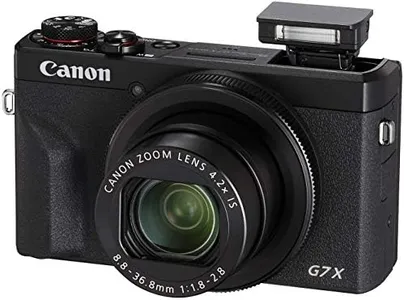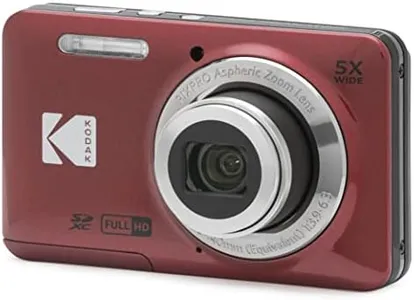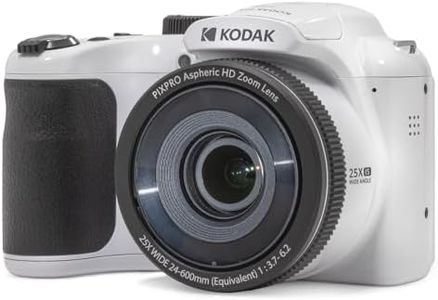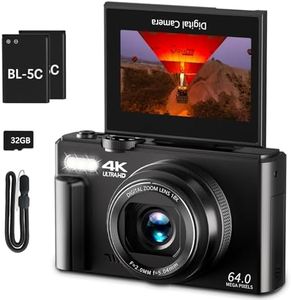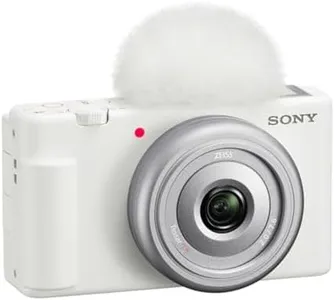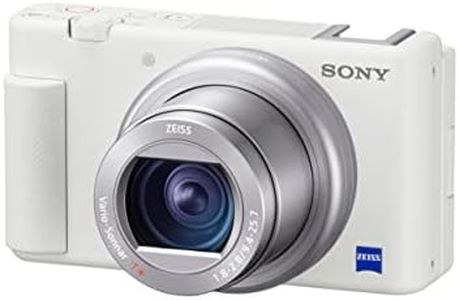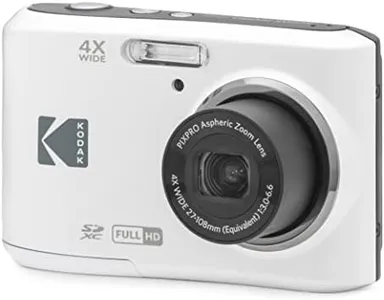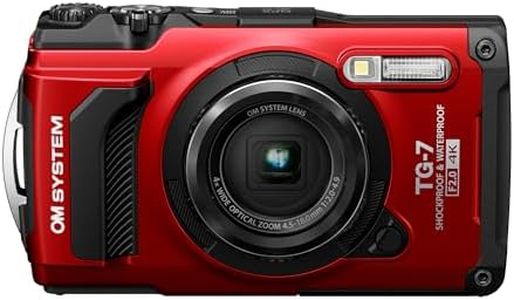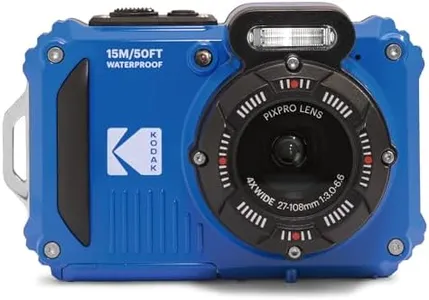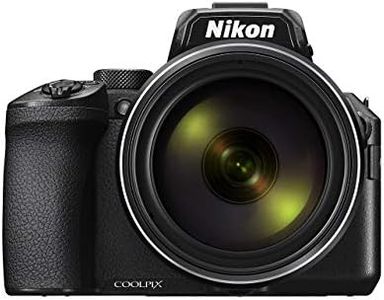We Use CookiesWe use cookies to enhance the security, performance,
functionality and for analytical and promotional activities. By continuing to browse this site you
are agreeing to our privacy policy
10 Best Point And Shoot Digital Cameras
From leading brands and best sellers available on the web.Buying Guide for the Best Point And Shoot Digital Cameras
When choosing a point-and-shoot digital camera, it's essential to focus on what fits your everyday needs. Point-and-shoot cameras are known for their simplicity, portability, and ease of use, making them suitable for casual photography without the complexity of interchangeable lenses. Start by thinking about when and where you'll use the camera most often—like vacations, family events, or for creative hobbies—and let those scenarios guide your selection of key features. Understanding the main specifications can help you make the best choice for your lifestyle and ensure you get a camera that's both enjoyable and practical.Sensor SizeSensor size refers to the physical size of the digital imaging sensor inside the camera, and it’s a key factor in determining image quality, low light performance, and depth of field. Larger sensors generally capture more light, meaning clearer, more detailed photos, especially in darker conditions. Typical segments include small sensors (1/2.3 inches), medium sensors (1-inch), and larger sensors (APS-C or above, though rare in point-and-shoots). If you mostly capture photos outdoors in good light or want a compact camera, a small or medium sensor could be sufficient. If you want better low-light performance and higher quality images, a camera with a larger sensor is a better fit.
Zoom Range (Optical Zoom)Zoom range, usually described as 'optical zoom,' tells you how much you can magnify your subject without losing image quality. Optical zoom physically moves the lens to zoom in, unlike digital zoom, which just enlarges the image and can make it blurry. Typical segments are short zoom (3–5x), medium zoom (5–10x), and high zoom (10–30x or more, called 'superzoom'). If you want to photograph faraway subjects like wildlife or sports, a higher optical zoom is better. For everyday indoor or group shots, a shorter zoom should suffice.
MegapixelsMegapixels refer to the amount of detail a camera sensor can capture and is often advertised as a headline spec. More megapixels mean larger, more detailed images, but after a certain point (usually above 12–16 MP), most people won’t notice a huge difference for general photography or online use. Megapixels become more crucial if you plan to print large photos or crop images significantly. For most users, a moderate megapixel count is more than enough for everyday photos.
Image StabilizationImage stabilization helps reduce blur from shaky hands, making it easier to take sharp pictures, especially in low-light or when using lots of zoom. There are two main segments: cameras without stabilization and those with optical or digital stabilization built in. If you mainly take casual, outdoor pictures and don't zoom much, this may not be critical, but if you want clear shots indoors, at night, or with a long zoom, having image stabilization can make a big difference.
Autofocus SystemThe autofocus system determines how quickly and accurately the camera can focus on your subject. There are basic contrast-detect systems, which are slower but precise, and more advanced phase-detect systems that are faster, especially for moving subjects. If you take mostly still subjects, simple autofocus is often enough. If you plan to capture action shots, kids, or pets, look for cameras with faster or more advanced autofocus options.
Size and WeightSize and weight are about how portable and easy to carry the camera is. Point-and-shoot cameras range from ultra-compact models that slip into a pocket to bulkier models with powerful zoom lenses. If you want a camera to take everywhere, prioritize slim, lightweight models. If you don’t mind carrying something a bit bigger for a better zoom or grip, a larger model might be worth it.
LCD Screen (Size and Tilting)The LCD screen is used for composing photos and reviewing them after shooting. Important points are the screen size (usually from 2.7 to 3.2 inches) and whether it can tilt or swivel. Larger and tilting screens make it easier to shoot from awkward angles or take selfies, while fixed, smaller screens keep the camera slimmer. Choose a tilting screen if you like creative perspectives or vlogging, and a fixed screen for simple, straightforward photography.
Video CapabilityMany point-and-shoot cameras now offer good video recording options. Video resolution is commonly full HD (1080p) or 4K. 4K video offers sharper footage but takes up more memory. If you want casual clips for social media, full HD is fine. If you see yourself shooting a lot of videos or want higher quality, consider a model that supports 4K.
Connectivity (Wi-Fi/Bluetooth)Connectivity options like Wi-Fi or Bluetooth allow you to quickly transfer photos to your phone or share them directly online. Some cameras also let you control them remotely via a smartphone app. If you like to share your photos instantly or avoid using cables, pick a camera with good wireless features. If you store photos on your computer and don’t mind plugging in, this may be less important.

